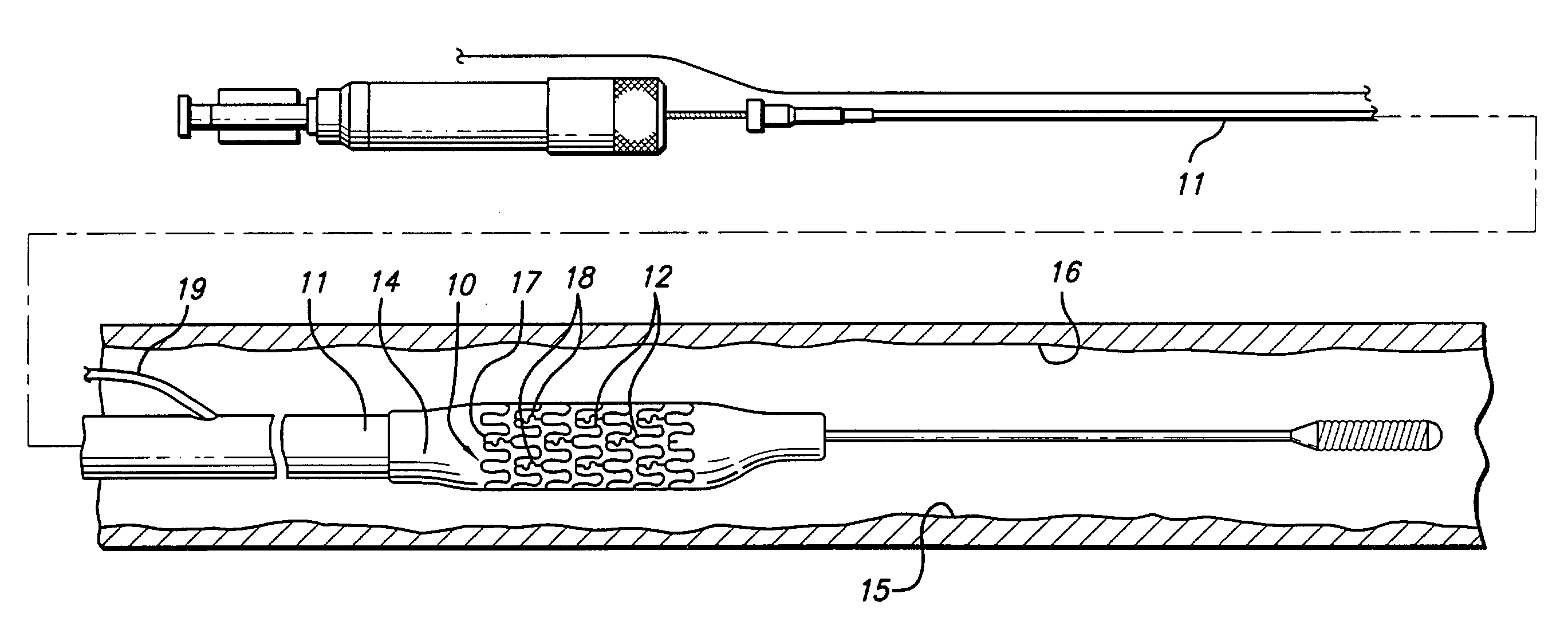Polymer link hybrid stent
a polymer link and hybrid stent technology, applied in the field of expandable endoprosthesis devices, can solve the problems of lack of flexibility required to easily navigate tortuous vessels without damaging the vessels during delivery, lack of flexibility of metallic stents, and lack of radial strength of polymer stents to adequately support the lumen once implanted, etc., and achieve the effect of sufficient column strength
- Summary
- Abstract
- Description
- Claims
- Application Information
AI Technical Summary
Benefits of technology
Problems solved by technology
Method used
Image
Examples
Embodiment Construction
[0029]Before describing in detail an exemplary embodiment of a hybrid stent with polymeric and metallic components in accordance with the present invention, it is instructive to briefly describe a typical stent implantation procedure and the vascular conditions which are typically treated with stents. Referring now to FIG. 1, a stent 10 of the present invention is shown mounted on a catheter 11 having a lumen 19 and an inflation member (balloon) 14. The stent and catheter are shown inside the lumen of an arterial vessel 16. The stent is shown positioned across a small amount of arterial plaque 15 adhering to the lumen of the artery. In some procedures, a stent is directly implanted without a prior procedure, such as balloon angioplasties. In other procedures, the plaque is remodeled when it is radially compressed against the walls of the artery, or has been partially removed from the artery. Lesion dilation is typically accomplished by an angioplasty procedure, while lesion removal ...
PUM
| Property | Measurement | Unit |
|---|---|---|
| Thickness | aaaaa | aaaaa |
| Thickness | aaaaa | aaaaa |
| Thickness | aaaaa | aaaaa |
Abstract
Description
Claims
Application Information
 Login to View More
Login to View More - R&D
- Intellectual Property
- Life Sciences
- Materials
- Tech Scout
- Unparalleled Data Quality
- Higher Quality Content
- 60% Fewer Hallucinations
Browse by: Latest US Patents, China's latest patents, Technical Efficacy Thesaurus, Application Domain, Technology Topic, Popular Technical Reports.
© 2025 PatSnap. All rights reserved.Legal|Privacy policy|Modern Slavery Act Transparency Statement|Sitemap|About US| Contact US: help@patsnap.com



